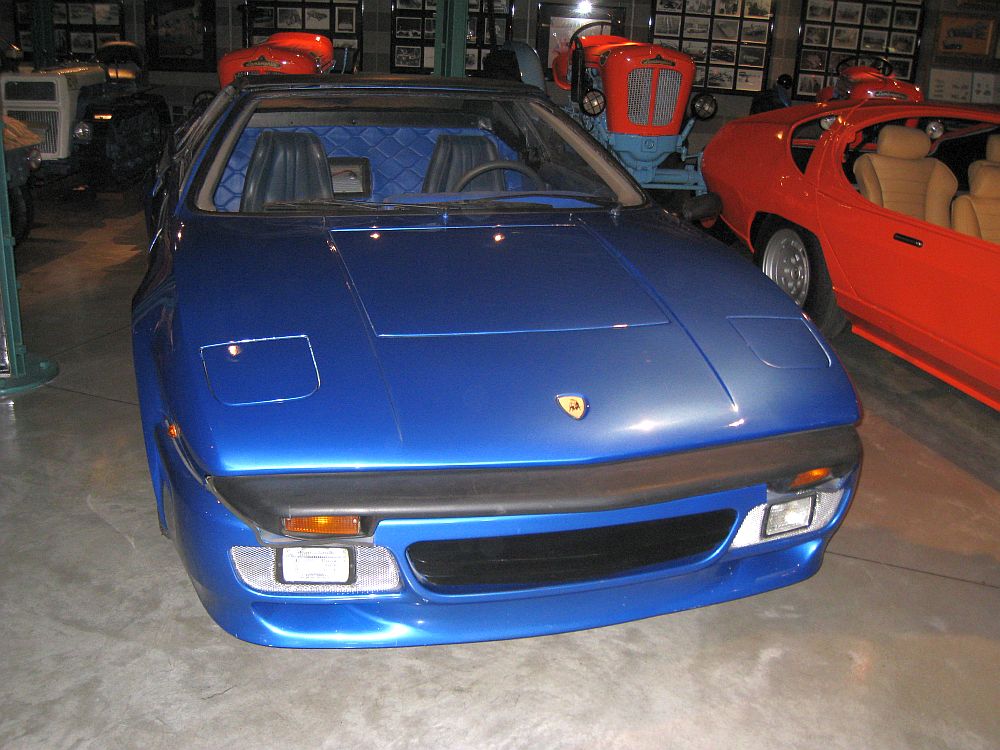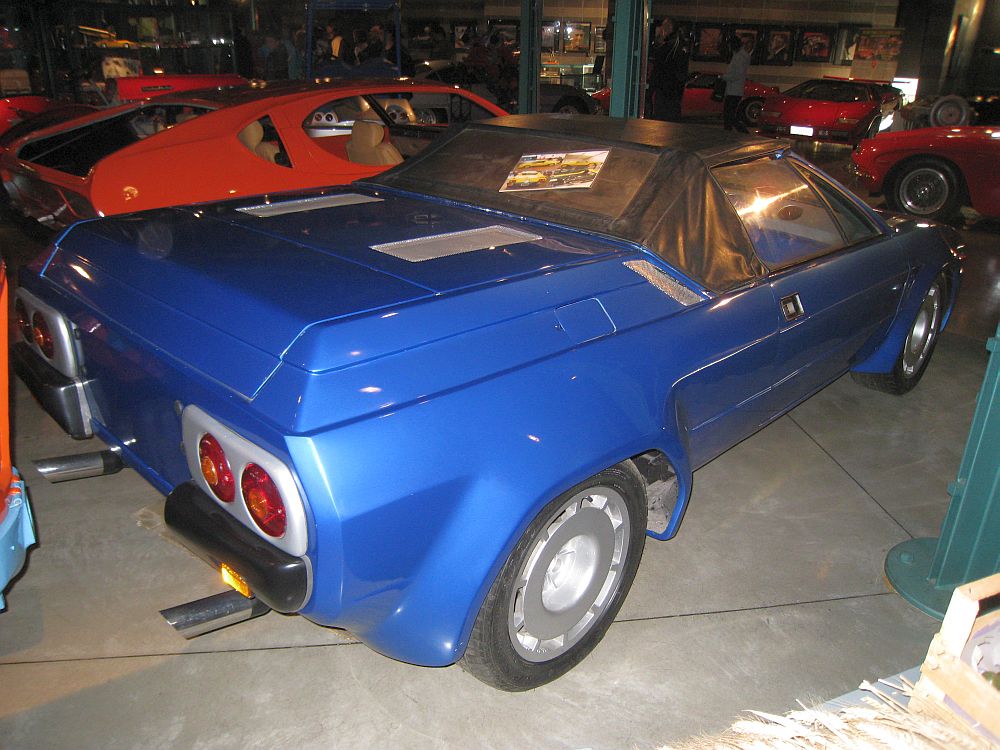Description
The Lamborghini Jalpa Spider Prototipo was a rare and fascinating glimpse into what could have been one of the most charismatic open-top Lamborghinis of the 1980s. Built as an experimental concept based on the Jalpa coupe, the Spider Prototipo was conceived to explore the possibility of adding a convertible variant to Lamborghini’s successful V8 line. While it never reached production, this prototype captured the essence of the Jalpa’s design and character, while adding a new dimension of open-air excitement that perfectly suited the car’s balance of performance and accessibility.
The Jalpa project itself was born in 1981 as an evolution of the Silhouette, which had introduced the compact V8 platform and targa-style roof to Lamborghini’s lineup. Designed once again by Marcello Gandini for Carrozzeria Bertone, the Jalpa was intended to be a more refined and usable sports car, one that could appeal to a broader audience than the extreme Countach. It combined a larger, more powerful 3.5-litre V8 engine with improved build quality and more modern styling, retaining the angular proportions and compact stance that made its predecessors so distinctive. The Spider Prototipo took this further—pursuing the idea of a fully open convertible version that could rival the Ferrari Mondial Cabriolet and Porsche 911 Targa of its era.
The Jalpa Spider Prototipo was constructed around the same steel monocoque chassis as the production Jalpa but re-engineered to maintain structural rigidity without a fixed roof. Reinforcements were added to the sills and bulkheads, and the windshield frame was strengthened to act as a roll hoop. Unlike the production Jalpa’s removable targa roof panel, the Spider featured a full convertible soft-top mechanism that folded neatly behind the seats, preserving the car’s sleek profile when lowered. The design work was carried out by Bertone’s styling team, who subtly re-proportioned the rear deck to accommodate the roof storage and to maintain aerodynamic harmony.
Visually, the Jalpa Spider Prototipo retained the distinctive wedge-shaped silhouette of the coupe, defined by its crisp Gandini lines, integrated bumpers, and deep side air intakes. The car sat low on its 16-inch five-hole alloy wheels, shod with wide Pirelli P7 tyres, and its flared wheel arches emphasized its athletic stance. The prototype was finished in a metallic silver paint scheme, paired with a contrasting black roof and dark red interior—a combination that gave it an elegant yet assertive presence. With the roof down, the car’s clean proportions and sharp angles became even more dramatic, evoking the spirit of earlier open-top Lamborghinis like the Silhouette while adapting the design to the aesthetics of the 1980s.
Power came from Lamborghini’s 3,485 cc all-aluminium V8 engine, the same unit used in the production Jalpa. With dual overhead camshafts per bank and four twin-choke Weber carburetors, it produced 255 horsepower at 7,000 rpm and 315 Nm of torque. Mated to a five-speed manual gearbox, the engine delivered smooth, linear power with a deep, throaty exhaust note—one that would have sounded particularly vivid in the open Spider configuration. Performance figures for the prototype were never officially published, but the standard Jalpa was capable of reaching 100 km/h (62 mph) in around 6 seconds and a top speed close to 250 km/h (155 mph). The Spider would likely have matched those numbers, offering the added thrill of wind-in-the-hair driving.
Inside, the Jalpa Spider Prototipo combined sportiness with refinement. The interior featured the same driver-focused layout as the coupe, with a compact instrument cluster, a three-spoke steering wheel, and leather-trimmed bucket seats. The finish was slightly more luxurious, however, with upgraded materials and detailing intended to position the car as a sophisticated grand tourer. The low seating position, combined with the open cockpit, created a sense of immediacy and engagement that was both thrilling and intimate.
Driving impressions of the Spider Prototipo, recorded by those who experienced it during its brief development phase, suggested that it retained the balanced handling of the standard Jalpa while offering a more relaxed and visceral character. The mid-engine layout, combined with the car’s compact dimensions and MacPherson strut suspension, ensured excellent agility and stability. The open body design introduced only minor trade-offs in rigidity, and the additional chassis bracing effectively maintained structural integrity.
Despite its promise, the Jalpa Spider Prototipo never advanced beyond the prototype stage. By the mid-1980s, Lamborghini’s financial resources were stretched thin, and the company’s attention was shifting toward updating the Countach and developing future projects under new ownership. The Spider would have required costly engineering work to bring to production, and the market for small-volume exotic convertibles was limited. As a result, only this single prototype was completed, serving as both an engineering study and a design showcase.
Today, the Lamborghini Jalpa Spider Prototipo stands as a unique piece of the brand’s history—an intriguing “what if” moment that reflects the creativity and ambition of the era. It demonstrated that Lamborghini’s V8 platform still had untapped potential and that the company could blend performance, elegance, and practicality with its trademark sense of drama.
The Spider Prototipo remains a testament to the versatility of Gandini’s design and the enduring appeal of Lamborghini’s V8 lineage. With its combination of sharp styling, engaging performance, and open-top freedom, it captured the spirit of 1980s Italian motoring at its finest—a car that might have brought Lamborghini’s accessible supercar dream to an even wider audience, had it been given the chance.



